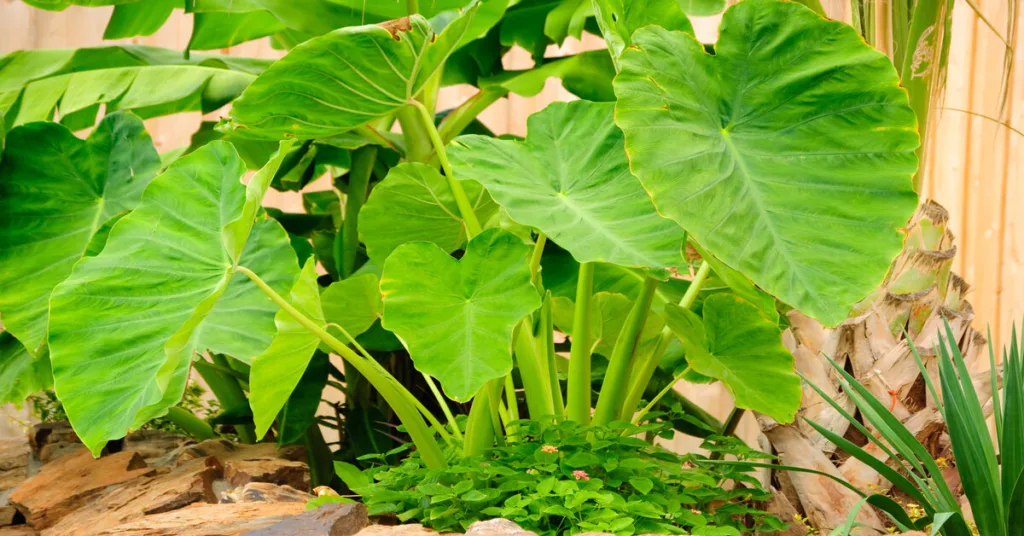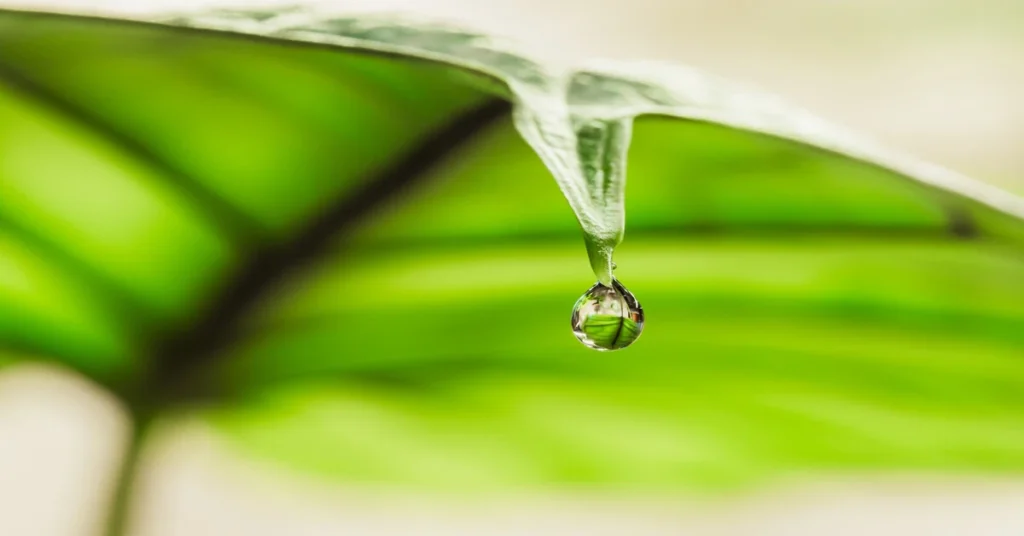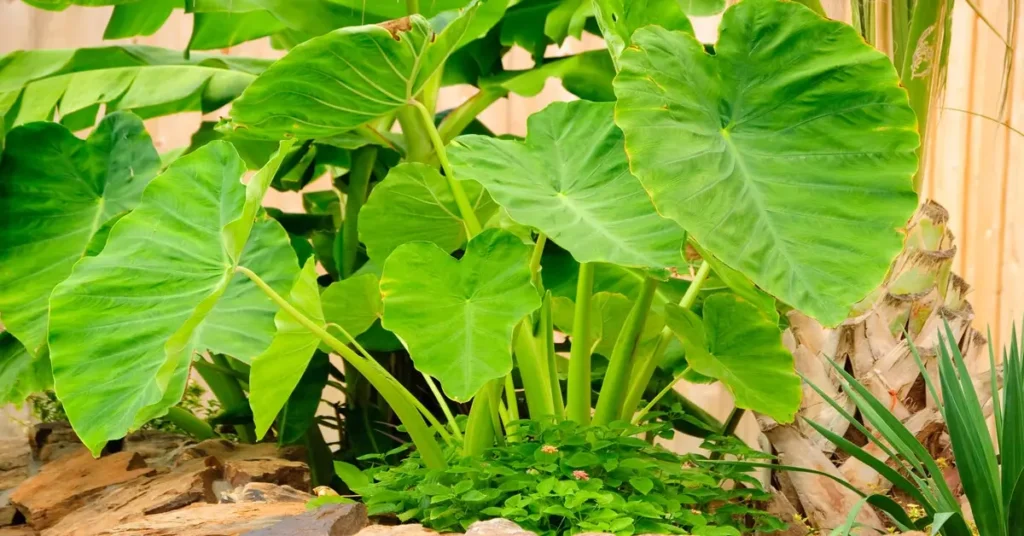Elephant ear plants, known for their large, heart-shaped leaves, are popular in gardens and homes. However, their sap contains toxic compounds that can cause serious health issues. This guide covers everything you need to know about handling these plants safely, from identifying their sap to treating exposure.
Understanding Elephant Ear Sap
Definition and Characteristics
Elephant ear sap is a milky or clear, sticky substance produced by plants in the genera Alocasia, Colocasia, and Xanthosoma. This sap is present throughout the plant, with the highest concentration in the leaf stems.
Chemical Composition and Toxicity
Toxic Compounds
- Calcium Oxalate: The primary toxic component, forming needle-like raphides that cause irritation.
- Saponin: A toxic chemical causing gastrointestinal irritation in larger doses.
- Asparagine: Not directly harmful, but can form neurotoxic acrylamide when cooked.
Symptoms of Exposure
- Ingestion: Mouth blisters, swelling, burning sensation, difficulty swallowing, gastrointestinal distress.
- Skin and Eye Contact: Redness, burning, rash, potential blindness.
First Aid and Treatment
Immediate Actions
- Skin Contact: Wash the area with mild soap and water, apply antihistamines to reduce symptoms.
- Ingestion: Rinse the mouth, avoid inducing vomiting unless advised by a professional, and seek immediate medical attention.
Professional Advice
Contact poison control (800-222-1222) for guidance. For pets, contact the ASPCA Animal Poison Control Center (888-426-4435).
Preventing Exposure
Protective Gear
Wear gloves, protective eyewear, and long-sleeved clothing when handling elephant ear plants to prevent sap contact.
Handling Techniques
Handle plants gently to avoid sap leakage. Clean gardening tools and wash clothing immediately after use to remove any sap residue.
Additional Resources
Chan, T. Y. K., Chan, L. Y., Tam, L. S., & Critchley, J. A. J. H. (1995). Neurotoxicity following the ingestion of a Chinese medicinal plant, Alocasia macrorrhiza. Human & experimental toxicology, 14(9), 727-728.
Elephant Ear. Poison Control Center. The University of Kansas Health System.
Elephant Ear Poisoning. UF Health. University of Florida Health.
Joshi A, Karnawat BS, Narayan JP, Sharma V. Alocasia macrorrhiza: A Decorative but Dangerous Plant. Int J Sci Stud 2015;3(1):221-223.
Kim, H., Lee, S. G., & Rhie, J. (2017). Dermal and neural toxicity caused by acrylamide exposure in two Korean grouting workers: a case report. Annals of Occupational and Environmental Medicine, 29, 1-6.
Lea, P. J., Sodek, L., Parry, M. A., Shewry, P. R., & Halford, N. G. (2007). Asparagine in plants. Annals of applied biology, 150(1), 1-26.
Lin, T. J., Hung, D. Z., Hu, W. H., Yang, D. Y., Wu, T. C., & Deng, J. F. (1998). Calcium oxalate is the main toxic component in clinical presentations of alocasia mycorrhiza (L) Schott and Endl poisonings. Veterinary and human toxicology, 40(2), 93-95.
Conclusion
Understanding and respecting the toxicity of elephant ear plants is crucial for safe handling. By following proper precautions and knowing how to respond to exposure, you can enjoy these striking plants without compromising your health.



